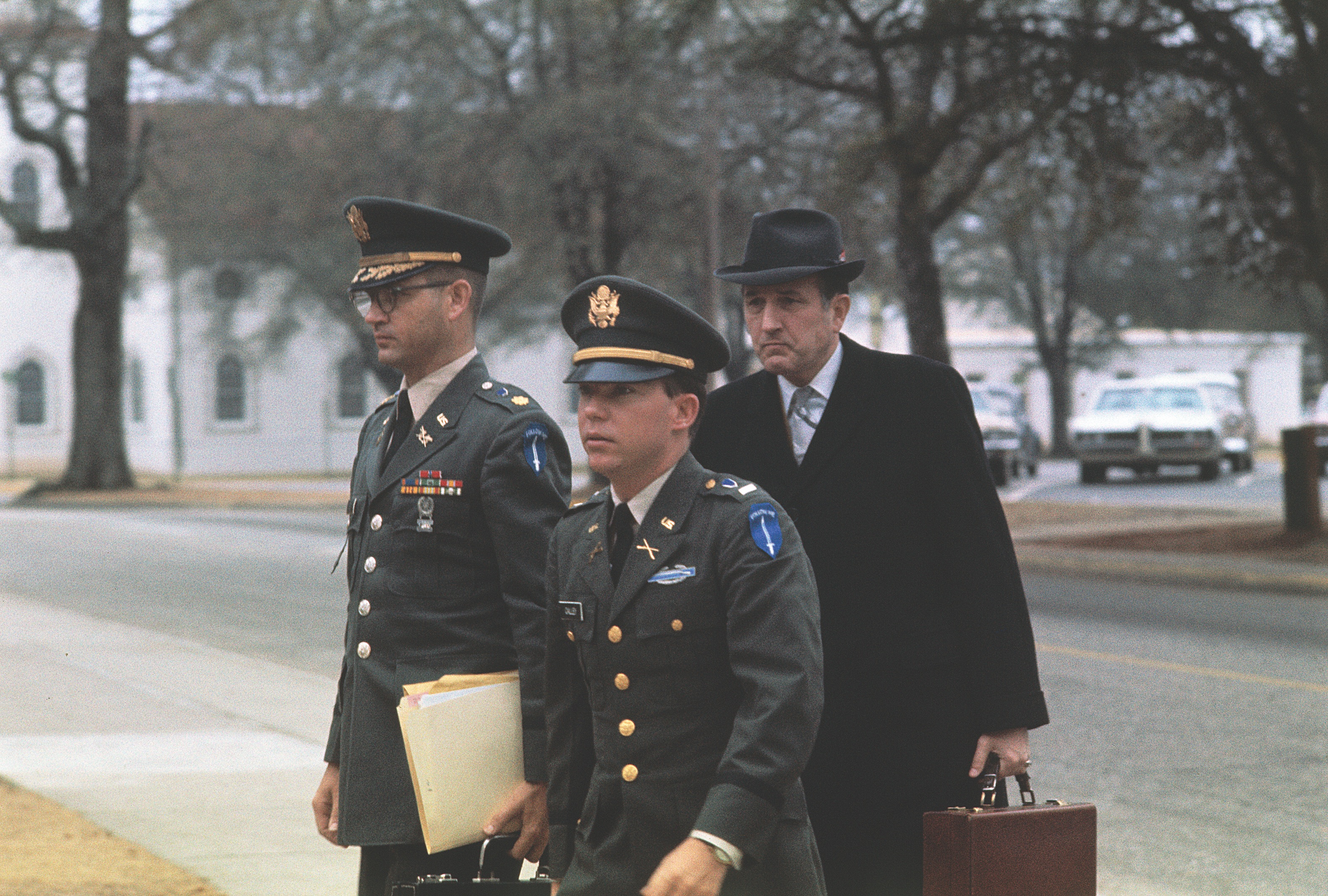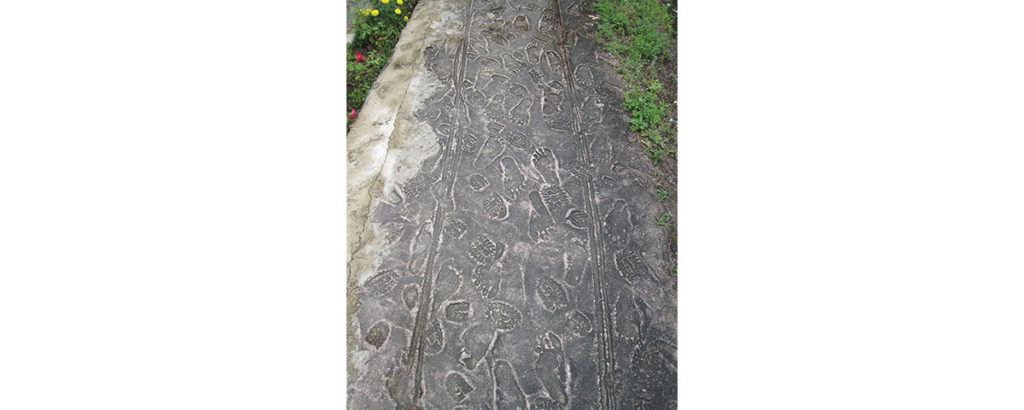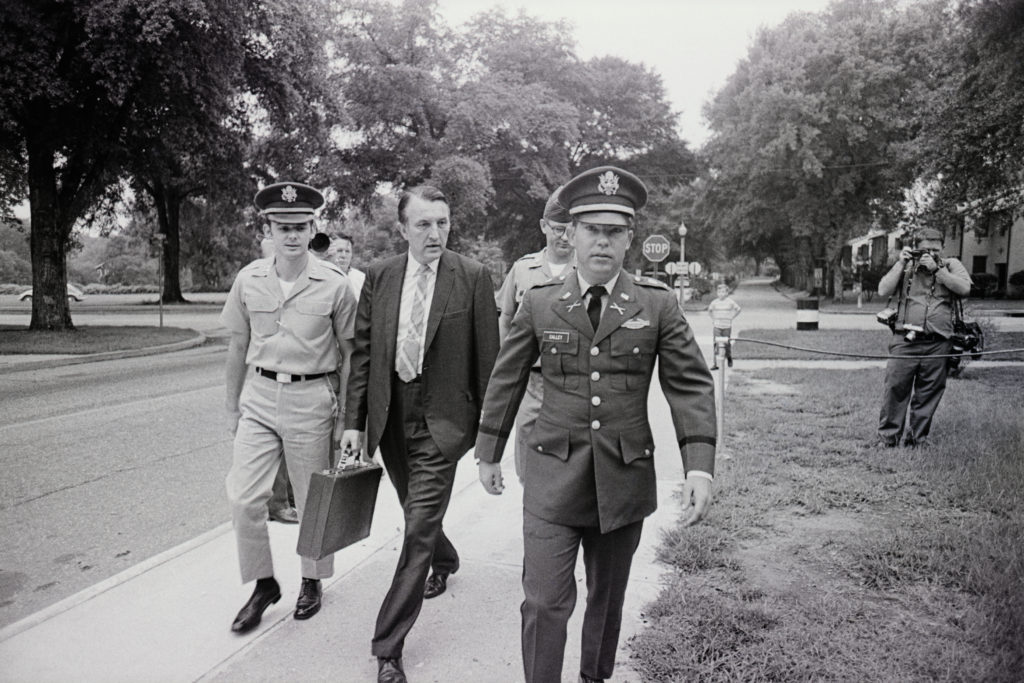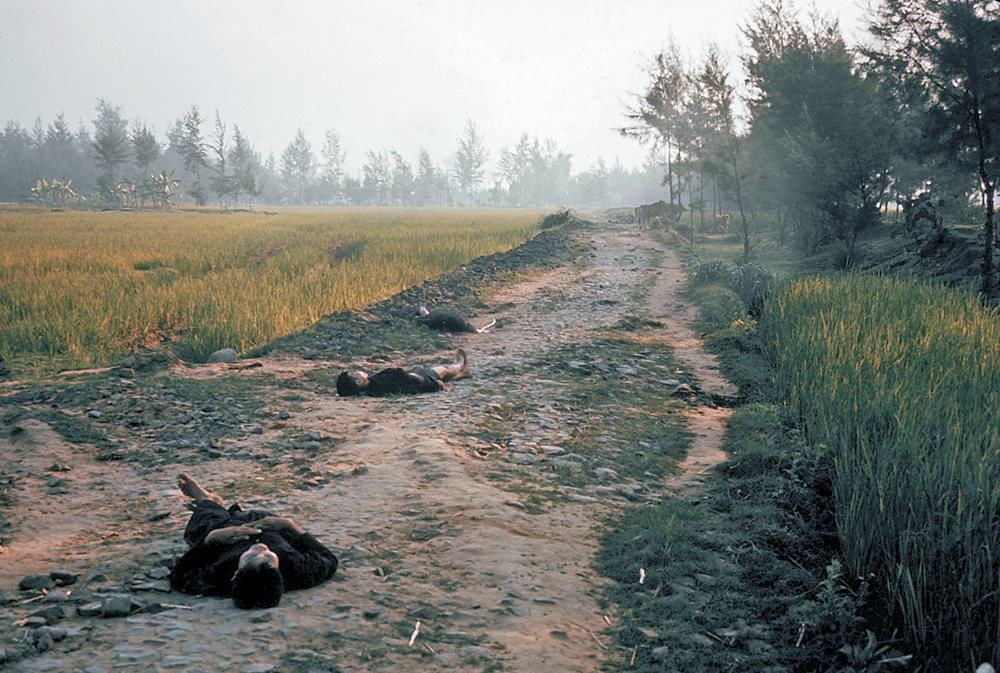In a sense, the court-martial of 1st Lt. William Laws Calley Jr. started in front of my desk at Infantry Hall, the headquarters and academic center of the U.S. Army Infantry School at Fort Benning, Georgia. It was late Wednesday morning on Sept. 5, 1969. Col. Earl C. Acuff, deputy assistant commandant of the school and the man charged with running its day-to-day operations, was breathless after his swift descent down the stairs from the office of the school’s commandant, Maj. Gen. Orwin C. Talbott, one floor above.
It wasn’t like Acuff to be huffing and out of breath. A master parachutist, he wore the Combat Infantryman Badge with two stars, denoting service as an infantryman in World War II, Korea and Vietnam. During the Korean War, the ROTC graduate from the University of Idaho led the 1st Battalion, 17th Infantry Regiment of the 7th Infantry Division at Pork Chop Hill and Old Baldy. In Vietnam, he commanded the 1st Infantry Division’s 3rd Brigade. When Acuff was tasked in 1965 to evaluate the Ranger training program at Benning, he put himself through the course, becoming at age 47 the oldest soldier ever to graduate from the rigorous program and earn the Ranger tab.
Recommended for you
I was deputy secretary of the Infantry School. Standing in front of my desk, Acuff came quickly to the point: “Who’s the best writer we have at the school?”
I was used to dealing with all sorts of information requests, but this one took me by surprise.
“What kind of writer are you looking for, sir?” I asked. “What kind of project is it?”
“I don’t know all the details,” Acuff explained. “It’s apparently a war crime of some sort. It’s got interest all the way up to the White House and the Pentagon. The way I understand it, there’s a first lieutenant assigned to The School Brigade who’s due to be released from active duty tomorrow. We need to flag his records today so he can’t be discharged and I need to appoint an Article 32 investigator and have orders cut today.”
Under Article 32 of the Uniform Code of Military Justice, a pretrial investigation is required before a “general court-martial,” the term for a military trial involving the most serious crimes, can be convened. An Article 32 investigation is much like a grand jury investigation in civilian life. Given the severity of the alleged charges—war crimes—and the high-level of interest in Washington, Acuff required a mature, skilled writer capable of conducting a thorough pretrial investigation and producing a clear, concise report about whether a court-martial was warranted.
I ran a mental checklist of the dozens of qualified officers then serving on the staff and faculty at the Infantry School and analyzed prospective names while Acuff waited. Suddenly I had a name to offer him.
“Dewey Cameron,” I said. Lt. Col. Duane “Dewey” Cameron, chairman of the Leadership Department, was the logical nominee. His department not only taught leadership but also supervised instructional programs in military writing. He was a highly regarded officer, a Pennsylvanian commissioned from Ohio University’s ROTC program. Cameron wrote the best prose at the school. He was a mature, unflappable, experienced officer who could cope with all the investigation’s sensitivities.
Acuff repeated the name. “Dewey Cameron. Of course, that’s it.” He smiled, knowing the right choice had been made. He repeated the name, then turned and ran back up the stairs to inform Talbott about the nominee for investigating officer.
That afternoon, Cameron was appointed to conduct an investigation under the provisions of Article 32 into circumstances involving alleged murders of noncombatants at the village of My Lai 4 in northern South Vietnam’s Quang Ngai province on March 16, 1968, by Calley, then a member of the 23rd Infantry Division (Americal).
Cameron’s Article 32 investigation, which took several months, resulted in the court-martial of Calley. The trial began Nov. 17, 1970, and ended with a conviction on March 29, 1971. The lengthy proceedings captured the public’s attention and led to widespread condemnation of the Army and its personnel, further increasing the antipathy for the war in Vietnam. Although Calley was charged personally with the murder of 22 South Vietnamese civilians, as many as 504 may have been killed by members of his platoon.
Retired four-star Gen. Matthew B. Ridgway, in an opinion piece published in The New York Times on April 2, 1971, called the revelations of the My Lai court-martial “grievous blows.”
An organized cover-up had taken place within the Americal Division, presumably reaching all the way to division commander Maj. Gen. Samuel W. Koster, according to the findings of a commission headed by Lt. Gen. William R. Peers.
The cover-up began almost immediately. On the day of the massacre, March 16, 1968, reporters at the U.S. military’s daily press briefing in Saigon were told: “In an action today, Americal Division forces killed 128 enemy near Quang Ngai City. Helicopter gunships and artillery missions supported the ground elements throughout the day.” With careers on the line for Americal leaders at division, brigade, task force and company levels, no mention was made of horrendous civilian casualties. Instead, enemy casualties were claimed.
The Peers Commission report concluded that at least 175 to 200 South Vietnamese men, women and children had been killed, including perhaps three or four confirmed Viet Cong soldiers, although “there were undoubtedly several unarmed VC (men, women and children) among them and many more active supporters and sympathizers.”
The commission investigated 14 officers directly or indirectly involved with the operation, including Koster and his assistant division commander, Brig. Gen. George H. Young Jr. The commander of the battalion-size task force that included Calley’s company, Lt. Col. Frank Barker, was killed in a helicopter crash before the investigation.
By the first week of September 1969, as Calley was preparing for discharge from active duty, it was clear to the Army that he had participated in some manner in the killings at My Lai. Accordingly, the Department of the Army’s chief of staff, Gen. William Westmoreland, previously the top commander in Vietnam, instructed Fort Benning to commence the Article 32 inquiry so that Calley could be retained on active duty if a court-martial was warranted.
With the appointment of Cameron as the Article 32 investigator on Sept. 5, 1969, Fort Benning’s public information office issued a nebulous press release about an investigation of an Army first lieutenant for his actions in Vietnam. The release was largely ignored by the news media.
When investigative reporter Seymour Hersh broke the full story of the My Lai massacre on Nov. 12, 1969, and it appeared in 30 newspapers nationwide, the American public was outraged at the atrocity. Time and Life magazines ran detailed reports with photos in late November and early December 1969. Much of the American public’s already waning support for the Vietnam War further eroded.
By then, U.S. troop strength in Vietnam, which had peaked at 543,400 in April 1969, was decreasing under President Richard Nixon’s phased withdrawal program. In 1971, the troop count in Vietnam was down to 156,800.
None of those remaining wanted to be the last casualty in an increasingly unpopular war. The Army was plagued by incidents of fragging, refusal to obey orders, drug abuse and desertions. In the continental United States, once-proud units such as the 1st Infantry Division at Fort Riley, Kansas, and the 5th Infantry Division (Mechanized) at Fort Carson, Colorado, became holding areas for short-timers back from Vietnam, with the consequent breakdown in military discipline.
It was therefore a small wonder that Ridgway could offer in The New York Times a litany of woes that revealed the sad state of the American Army in 1971, with the circumstances at My Lai “the most damaging of all.” V
Bob Orkand, a retired lieutenant colonel, served in Vietnam as executive officer and operations officer of the 1st Battalion (Airmobile), 7th Cavalry, 1st Cavalry Division (Airmobile) 1967-68. He commanded a mechanized infantry battalion at Fort Benning in the 197th Infantry Brigade 1972-73, a prototype of the volunteer Army. In 1974, he was Pentagon spokesman on the volunteer Army. He co-authored a study of the M16 rifle’s shortcomings, Misfire: The Tragic Failure of the M16 in Vietnam (2019). Orkand lives in Huntsville, Texas.









